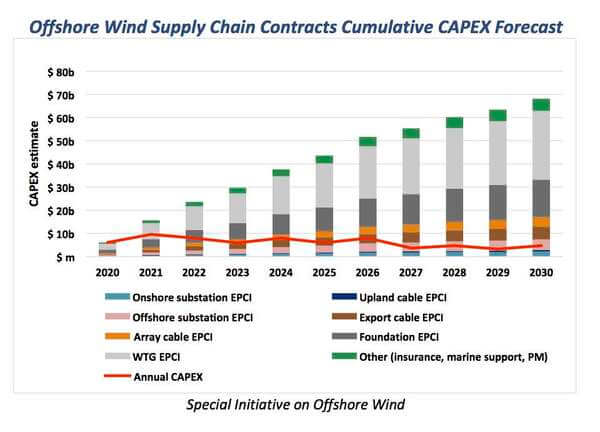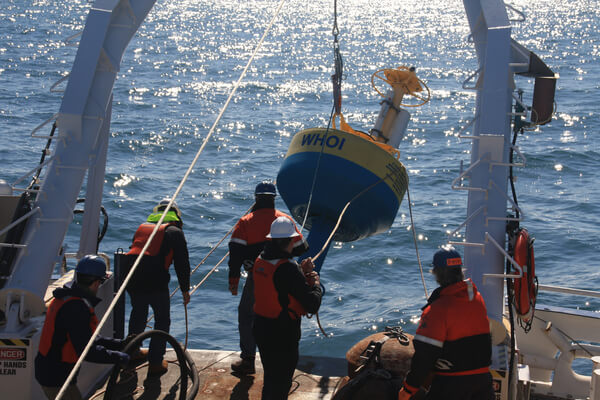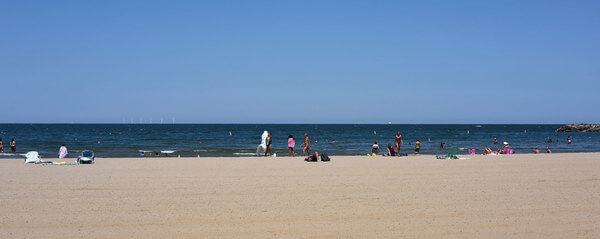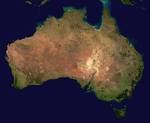News Release from windfair.net
Wind Industry Profile of
U.S. Benefits from Offshore Wind
Just recently, a new white paper of the Special Initiative on Offshore Wind (SIOW) with analyses by the Renewables Consulting Group drew attention to the huge untapped potential in this industry. The analyses assume that by 2030 there will be a capacity of almost 20 gigawatts of offshore wind energy in the seven states of the Atlantic coast alone. If all these wind farms will actually be built, the industry can record almost $70 billion in supply chain turnover.
According to the American Wind Energy Association (AWEA), the key components needed for this projected build-out include:
- Over 1,700 offshore wind turbines and towers: $29.6 billion
- Over 1,750 offshore wind turbine and substation foundations: $16.2 billion
- Over 5,000 miles of power export, upland and array cables: $10.3 billion
- Over 60 onshore and offshore substations:$ 8 billion
- Marine support, insurance and project management activities: $ 3 billion

The predictions see a bright future for offshore wind in the U.S. (Image: Special Initiative on Offshore Wind)
"In quantifying the industrialization of offshore wind in the U.S., this white paper illustrates just how much potential there is in the sector, top to bottom,” said Jason Folsom, Boston-based U.S. National Sales Director for MHI Vestas Offshore Wind. “It presents an exceptionally compelling case on the emergence of offshore wind as an engine for U.S. energy transition.”
Meanwhile, various research areas are already showing that offshore wind is not only benefiting the energy industry: students from the University of Rhode Island recently conducted a research project in the Block Island Wind Farm recording the sounds of whales.

URI engineering students deploy an acoustic device they created for detecting whale sounds near the Block Island Wind Farm. (Image: Luke Puk, University of Rhode Island)
"What we were trying to do was detect marine mammals acoustically, using a hydrophone underwater that listens for the sounds of marine mammals, then sends those sounds to a server we have on campus, and we can listen to them live or record them," explains Luke Puk, one of the students involved. In addition to dolphin sounds, sei whales and fin whales were also recorded, but the extensive data still has to be completely evaluated.
Research projects around Lake Erie, where the Icebreaker Wind Project with six turbines will soon be built, are already one step ahead. Although it's not an offshore wind farm in the classic sense, the energy industry, environmental protection and research are already benefiting from each other here as well. The developer of the wind farm, Lake Erie Energy Development Corporation (LEEDCo), for example, is involved in various studies together with 21 leading research institutions in the country that are intended to contribute to improving the water quality in the lake in the long term. These include the exchange of scientific data, access to offshore platforms and research to monitor and understand large-scale processes at Lake Erie.
"Our mission here goes beyond simply generating clean energy," says Lorry Wagner, LEEDCo President. "“All of our Great Lakes are vital, immense resources for both people and wildlife. From day one, our mission has been to protect them and advance science to keep this region healthy for generations to come. This data-sharing collaborative will give us the opportunity to work side by side with the research community to design the most advanced lake monitoring system in the Great Lakes."

That's how the planned Icebreaker Wind Farm in Lake Erie will look like (Image: LEEDCo)
Traditionally, researchers have to remove their sensors and buoys from the lake in winter due to the ice conditions and can only use them again in spring. With LEEDCo's investments in offshore infrastructure, however, scientists can use their sensors all year round and collect data in the waters of Lake Erie. This is an ideal supplement to the other agreed regulations around the wind farm, including observing flora and fauna around the wind farm for at least five years and measuring water quality.
So while the construction of the next offshore wind farm is still to come, Americans are already benefiting from this up-and-coming industry.
- Author:
- Katrin Radtke
- Email:
- press@windfair.net
- Keywords:
- USA, offshore, wind energy, wind industry, energy, research, projects, University, water quality, environment


























